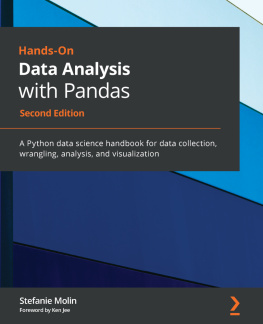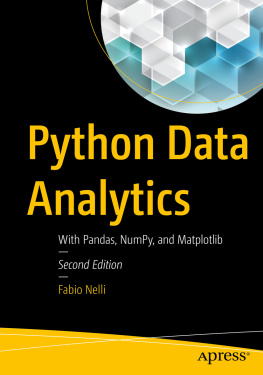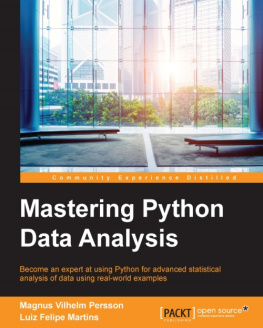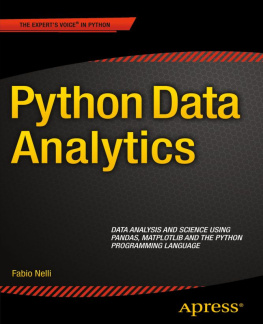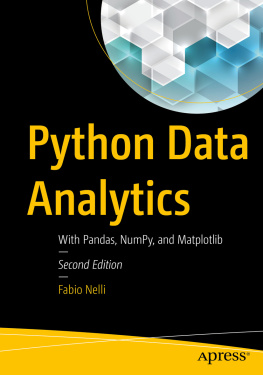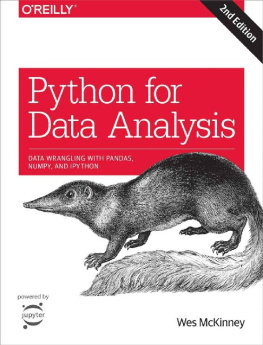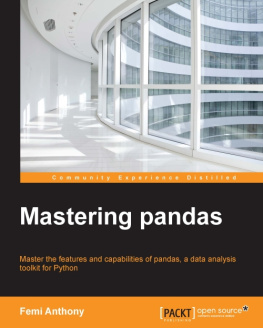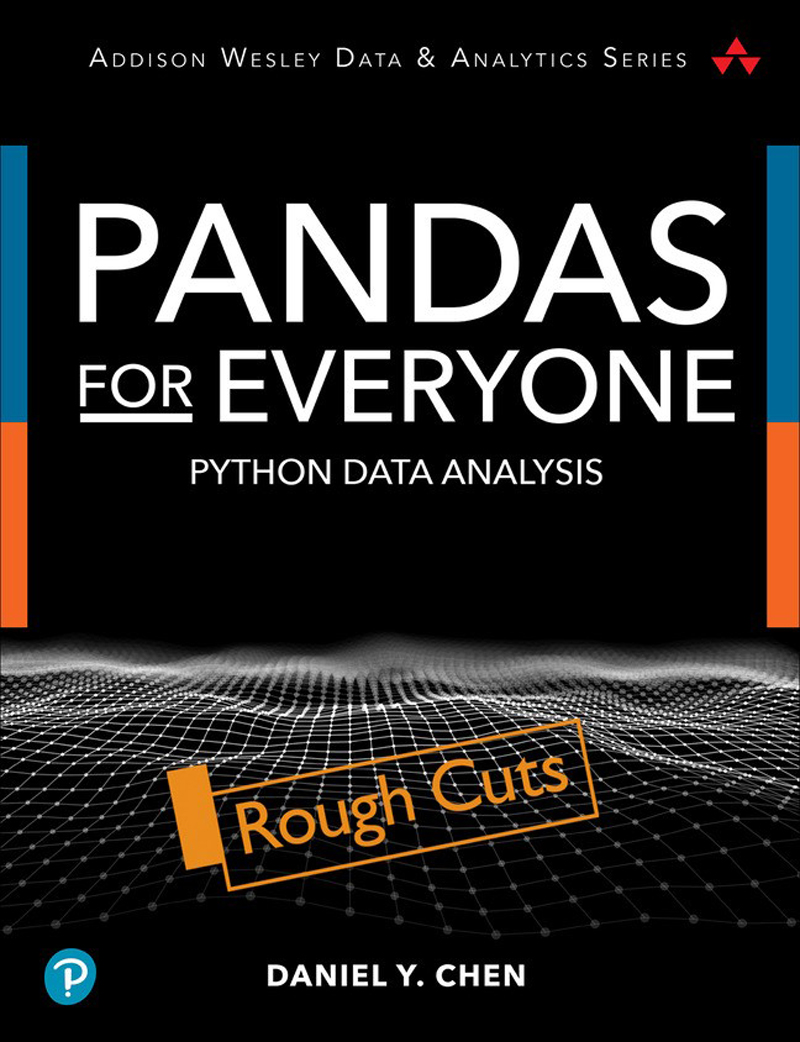Daniel Chen - Pandas for Everyone: Python Data Analysis (Addison-Wesley Data & Analytics Series)
Here you can read online Daniel Chen - Pandas for Everyone: Python Data Analysis (Addison-Wesley Data & Analytics Series) full text of the book (entire story) in english for free. Download pdf and epub, get meaning, cover and reviews about this ebook. year: 2023, publisher: Addison-Wesley Professional, genre: Romance novel. Description of the work, (preface) as well as reviews are available. Best literature library LitArk.com created for fans of good reading and offers a wide selection of genres:
Romance novel
Science fiction
Adventure
Detective
Science
History
Home and family
Prose
Art
Politics
Computer
Non-fiction
Religion
Business
Children
Humor
Choose a favorite category and find really read worthwhile books. Enjoy immersion in the world of imagination, feel the emotions of the characters or learn something new for yourself, make an fascinating discovery.

- Book:Pandas for Everyone: Python Data Analysis (Addison-Wesley Data & Analytics Series)
- Author:
- Publisher:Addison-Wesley Professional
- Genre:
- Year:2023
- Rating:4 / 5
- Favourites:Add to favourites
- Your mark:
Pandas for Everyone: Python Data Analysis (Addison-Wesley Data & Analytics Series): summary, description and annotation
We offer to read an annotation, description, summary or preface (depends on what the author of the book "Pandas for Everyone: Python Data Analysis (Addison-Wesley Data & Analytics Series)" wrote himself). If you haven't found the necessary information about the book — write in the comments, we will try to find it.
Manage and Automate Data Analysis with Pandas in Python
Today, analysts must manage data characterized by extraordinary variety, velocity, and volume. Using the open source Pandas library, you can use Python to rapidly automate and perform virtually any data analysis task, no matter how large or complex. Pandas can help you ensure the veracity of your data, visualize it for effective decision-making, and reliably reproduce analyses across multiple data sets.
Pandas for Everyone, 2nd Edition, brings together practical knowledge and insight for solving real problems with Pandas, even if youre new to Python data analysis. Daniel Y. Chen introduces key concepts through simple but practical examples, incrementally building on them to solve more difficult, real-world data science problems such as using regularization to prevent data overfitting, or when to use unsupervised machine learning methods to find the underlying structure in a data set.
New features to the second edition include:
- Extended coverage of plotting and the seaborn data visualization library
- Expanded examples and resources
- Updated Python 3.9 code and packages coverage, including statsmodels and scikit-learn libraries
- Online bonus material on geopandas, Dask, and creating interactive graphics with Altair
Chen gives you a jumpstart on using Pandas with a realistic data set and covers combining data sets, handling missing data, and structuring data sets for easier analysis and visualization. He demonstrates powerful data cleaning techniques, from basic string manipulation to applying functions simultaneously across dataframes.
Once your data is ready, Chen guides you through fitting models for prediction, clustering, inference, and exploration. He provides tips on performance and scalability and introduces you to the wider Python data analysis ecosystem.
- Work with DataFrames and Series, and import or export data
- Create plots with matplotlib, seaborn, and pandas
- Combine data sets and handle missing data
- Reshape, tidy, and clean data sets so theyre easier to work with
- Convert data types and manipulate text strings
- Apply functions to scale data manipulations
- Aggregate, transform, and filter large data sets with groupby
- Leverage Pandas advanced date and time capabilities
- Fit linear models using statsmodels and scikit-learn libraries
- Use generalized linear modeling to fit models with different response variables
- Compare multiple models to select the best one
- Regularize to overcome overfitting and improve performance
- Use clustering in unsupervised machine learning
Daniel Chen: author's other books
Who wrote Pandas for Everyone: Python Data Analysis (Addison-Wesley Data & Analytics Series)? Find out the surname, the name of the author of the book and a list of all author's works by series.

